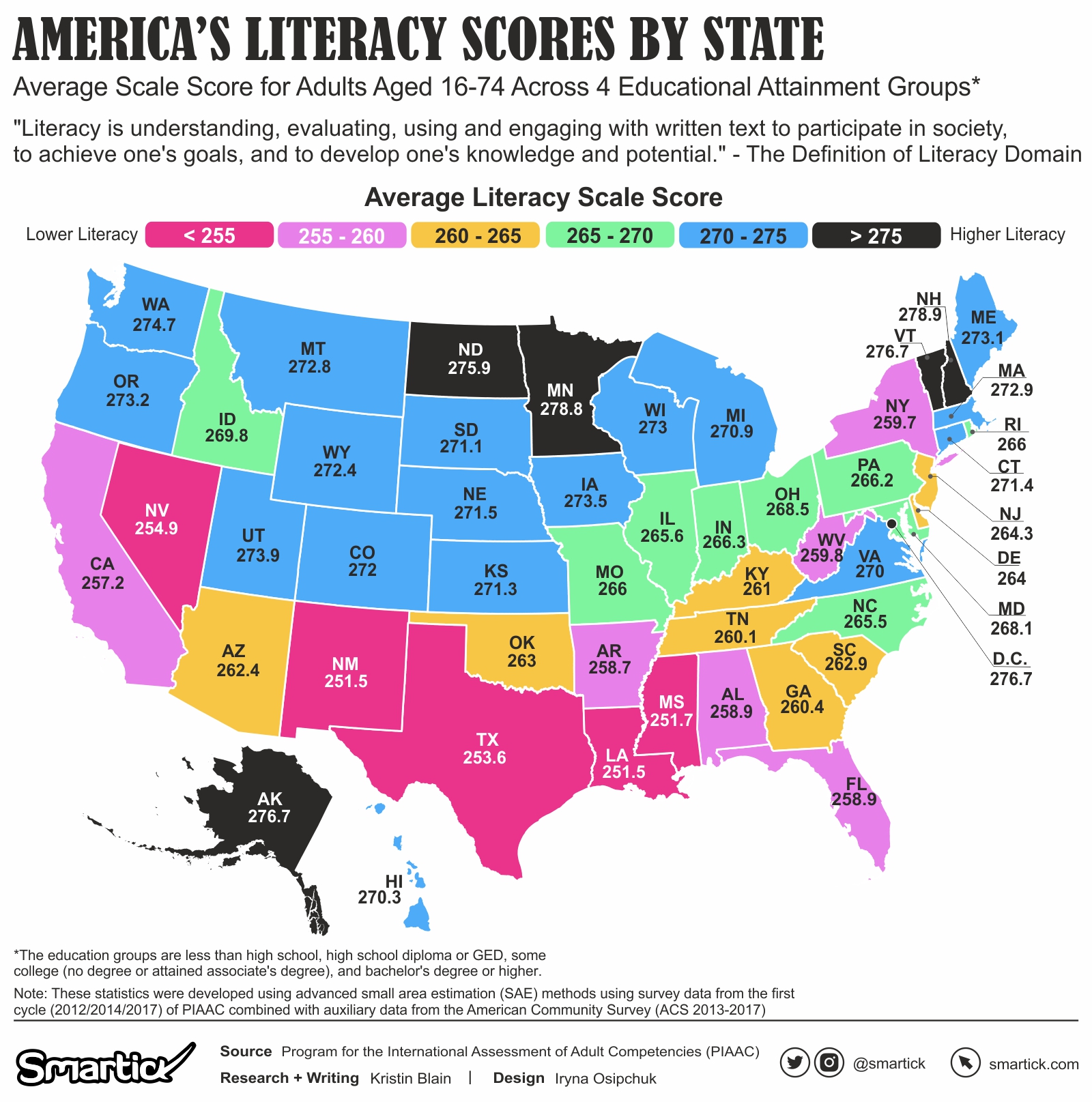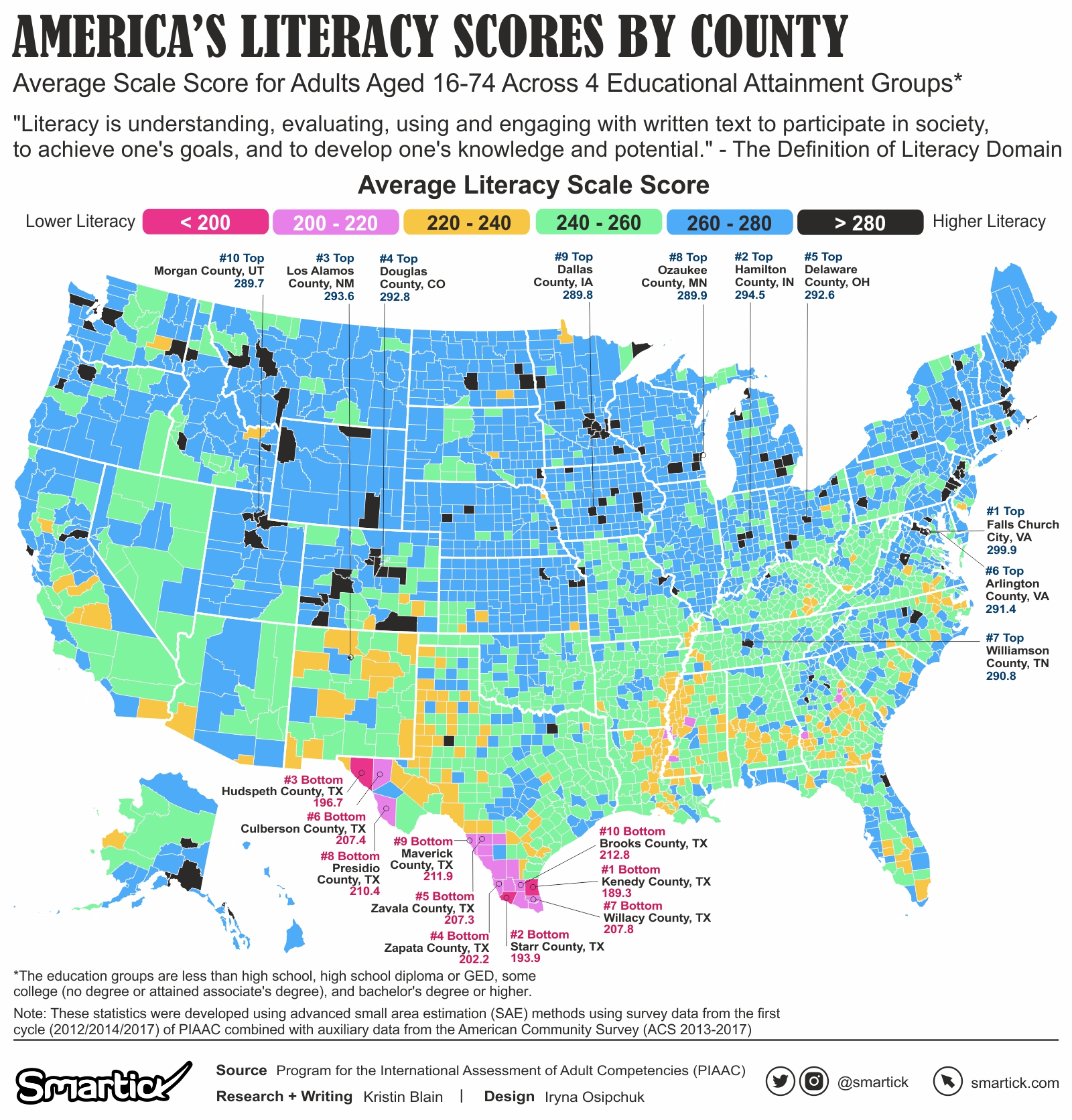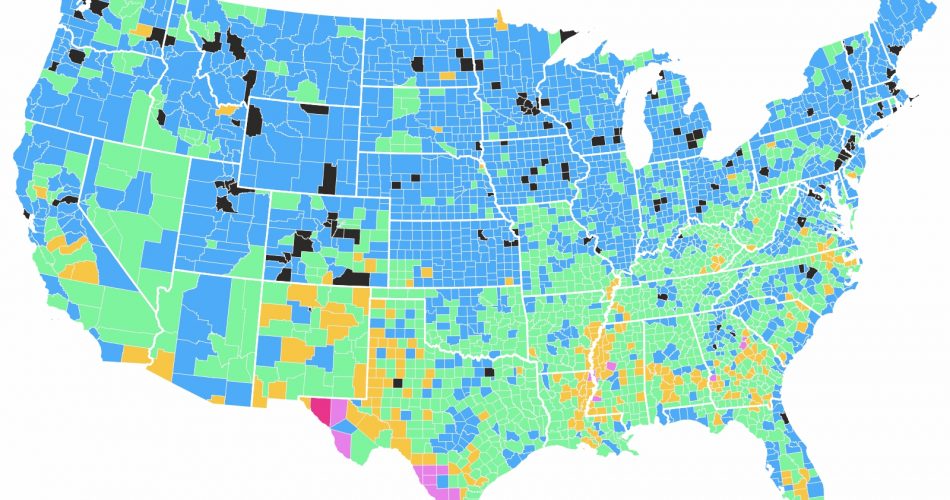
Literacy, often thought of as simply reading and writing, is far more profound. The Program for the International Assessment of Adult Competencies (PIAAC) offers a refined perspective:
“Literacy is understanding, evaluating, using, and engaging with written text to participate in society, to achieve one’s goals, and to develop one’s knowledge and potential.”
But how do different regions in the U.S. fare in living up to this robust definition? It’s time to go on a numerical journey across the country, spotlighting both stars and underperformers in literacy.

When we unfurl the map and trace the literacy scores across the nation, a vibrant tapestry emerges, displaying a rich blend of academic strides and areas yearning for attention.
The northeastern region stands as a beacon of literacy accomplishments, with New Hampshire and Vermont sporting scores in the upper echelon, touching the 278-277 mark. A surprising appearance from the chilly frontier state of Alaska and the bustling hub of District of Columbia at around 276.7 highlights a diverse commitment to reading prowess across drastically different terrains.
The Midwest and the Pacific Northwest, often acclaimed for their robust educational structures, also flaunt impressive numbers. Minnesota’s close second to New Hampshire, alongside commendable scores by Iowa, Washington, and Oregon, reiterates this region’s longstanding commitment to foundational education.
However, as we drift southwards and towards the southwest, the tapestry’s hues begin to fade. States like Nevada, Texas, Louisiana, and New Mexico, hovering in the 250s, signify the need for renewed focus and potentially innovative interventions. The sun-soaked landscapes of California and Florida too seem to be overshadowed by their relatively lower literacy scores, nestled in the high 250s.
In essence, the nation’s literacy narrative is multifaceted. While states like North Dakota, Utah, and Massachusetts nestle comfortably in the middle spectrum, ensuring consistent education quality, the stark contrast between the top performers and those at the bottom cannot be ignored. The challenge, as ever, remains in ensuring that the tapestry remains vibrant across every square inch, reflecting a nation united in its quest for knowledge.

Local Luminaries: Top 10 Counties Setting the Literacy Benchmark
Zooming into a more granular view, counties shine a light on the grassroots level of educational accomplishments. Falls Church City in Virginia sits majestically atop with a stellar score of 299.9, echoing its community’s profound engagement with literature and learning. In the heart of the Midwest, Hamilton County in Indiana radiates with a score of 294.5, reflecting the commitment of its residents to academic pursuits. Los Alamos County in New Mexico, renowned for its scientific history, also excels in the literacy department with 293.6. The subsequent counties, spanning from Colorado’s Douglas County to Utah’s Morgan County, each register scores in the high 280s to low 290s, underlining the collective effort of these regions in promoting literacy.
Areas of Attention: 10 Counties Facing Literacy Hurdles
Yet, there are regions that starkly accentuate the need for targeted interventions. The state of Texas dominates this list, revealing potential regional challenges that need to be addressed. Dimmit County, the highest among the bottom ten, still only manages a score of 212.8. The narrative gets grimmer as we move down to Kenedy County, which registers a somber 189.3. This cluster of Texan counties, including Maverick, Presidio, and Willacy, to name a few, collectively underscores a significant concern. The consistently low scores in these counties hint at systemic challenges that demand a deeper dive and a more strategic approach to bolstering literacy in these areas.
As the chapters of America’s literacy tale unfold, it becomes evident that while many regions gleam with the torch of knowledge, others lie in the shadows, yearning for illumination. This disparity not only speaks to the current state of education but serves as a call to action for educators, policymakers, and communities alike. It’s a collective endeavor, ensuring that every American, regardless of their geography, can bask in the enriching glow of literacy. The road ahead may be riddled with challenges, but with concerted effort and unwavering commitment, every corner of this vast nation can pen its own success story.

